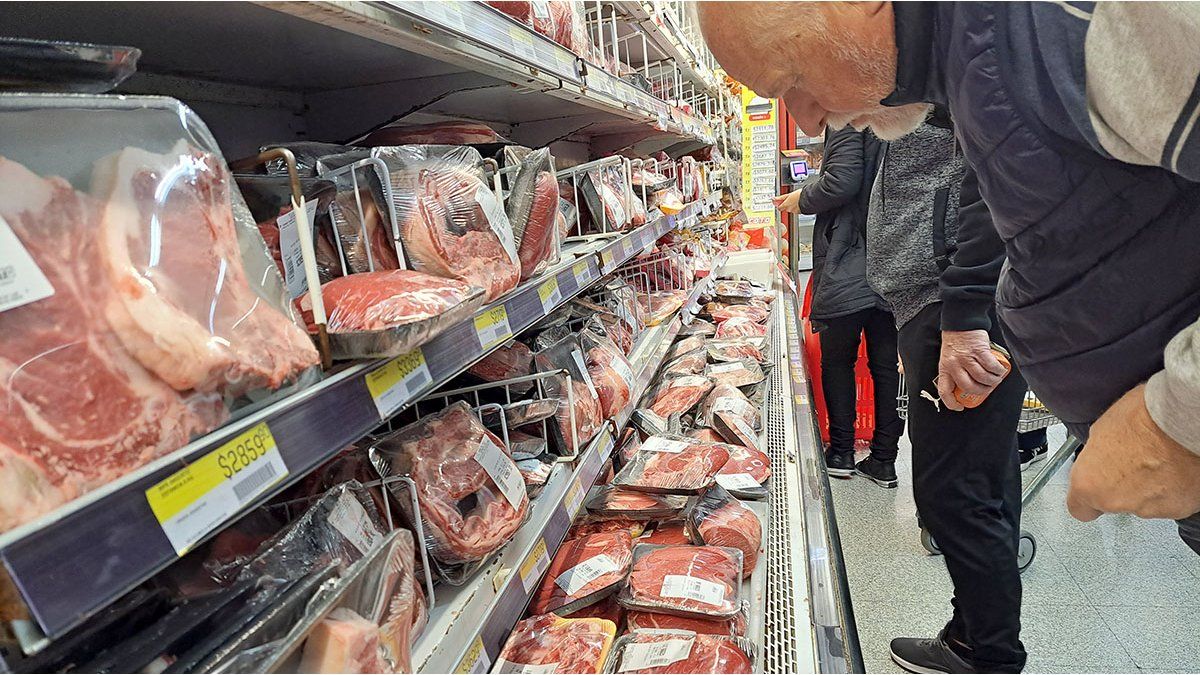The price of the meat spiked in August and contributed to the strong acceleration of the inflationwhich reached its highest monthly variation in 32 years. In any case, due to a contraction in consumption, not only were the increases slowed, but they began to be seen certain “downward corrections”. In this scenario, going forward analysts do not foresee new sharp jumps, but instead estimate that it would remain at the CPI variation levels at least until December.
For example, while the CPI rose 12.4% in August and accumulated an interannual increase of 124.4%, the item “Meats and derivatives” rose 25.6% monthly in the GBA and 128.2% year-on-year. In that sense, from the Chamber of Meat Industry and Commerce (CICCRA), they analyzed that “the acceleration of the inflation rate had a strong impact on the value of standing property (+53.4% monthly)”, so the beef “registered an increase of 34.4% compared to Julyeven surpassing the sharp adjustment that it had shown in February of this year (+32.8%).”
“It has been fifteen months since a year-on-year increase in the price of beef greater than the general level of consumer prices has been observed,” the entity added and highlighted that In the last twelve months the average price of beef rose 3.7% with respect to the general level of the CPI.
However, after this sudden jump, both the farm and – to a lesser extent – the price of meat on the shelf showed downward corrections. “The strong rise was met with a very weakened purchasing power of consumers. So, what began to happen is that those increases that the farm had had, and therefore the meat was having, consumption could not validate. There began to be meat left unsold, then, after the peak, the price began to fall and is balancing, although it is not yet fully visible on the counter. Because the price of the farm corrected much more than what we see in the meat,” he explained. David Miazzochief economist of the FADA Foundation.
Regarding the price of the tax authoritiesMiazzo maintained that “from the maximum, corrected 20 or 25%.” “And the meat didn’t correct that much. But the truth is that both the farm and the meat went down one step compared to that maximum,” he explained.
Along the same lines, the president of the Association of Butcher Shop Owners in the City of Buenos AiresAlberto Williams, held that “two weeks ago the meat increased a lot, then it started to go down and now we are not talking about an increase, we are talking about a decrease.”; That’s important, now we’re going to see if it can be maintained.” In radio statements, Williams estimated that on average there was a decline of between $200 and $300.
Precisely, when analyzing what may happen in the future, Miazzo maintained that it is likely that “meat prices go more or less in line with inflation.” “Because now that you found this new balanceand that it didn’t seem so expensive, I think it will stabilize in this area, because consumption will continue to decline. Exports, until there is exchange unification, will continue without purchasing power. But on the other hand, it will be putting pressure on a supply that is also contracting“, the analyst told Ámbito.
“The pressure from lower production will continue to be there. That’s why I wouldn’t expect the price to continue falling in real terms. But he also encounters these two difficulties to be able to go up: then, I would expect that at least until December, it will remain around inflation. In this lowest echelon that we are currently seeing. That would be the expectation for today. After December it is difficult to predict what may happen,” Miazzo concluded.
Fair Prices
Fair Prices It is one of the tools with which the Government seeks precisely to contain further increases in different essential products. And it also applies to meat.
For example, last week the values of seven popular cuts, which are part of the program, were updated. In an agreement between the Commerce secretary and the exporting companies that make up the main cold storage rooms in the country, continuity was given to the program that offers the main beef cuts at affordable prices in large supermarket chains, regional supermarkets and butcher shops participating in the program. Thus, the roasted kilo became worth $1,466; buttock, $1,947; matambre, $1,855; empty, $1,914; skirt, $954; palette $1,575; and roast tapa, $1,466.
“The beef exporting companies, grouped in the ABC, Unica and Fifra chambers, the supermarkets and hypermarkets of the ASU, CAS and FASA chambers and participating butcher shops participate in this agreement,” official sources indicated.
Source: Ambito




